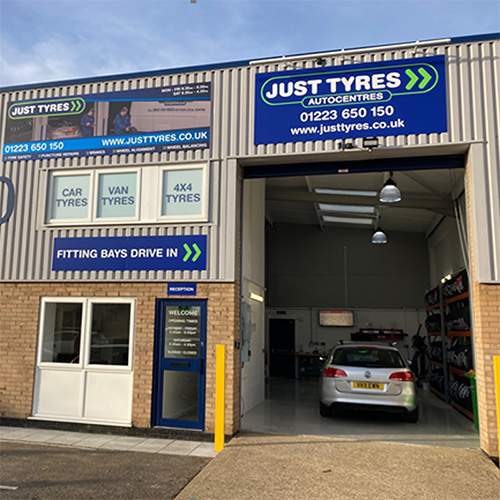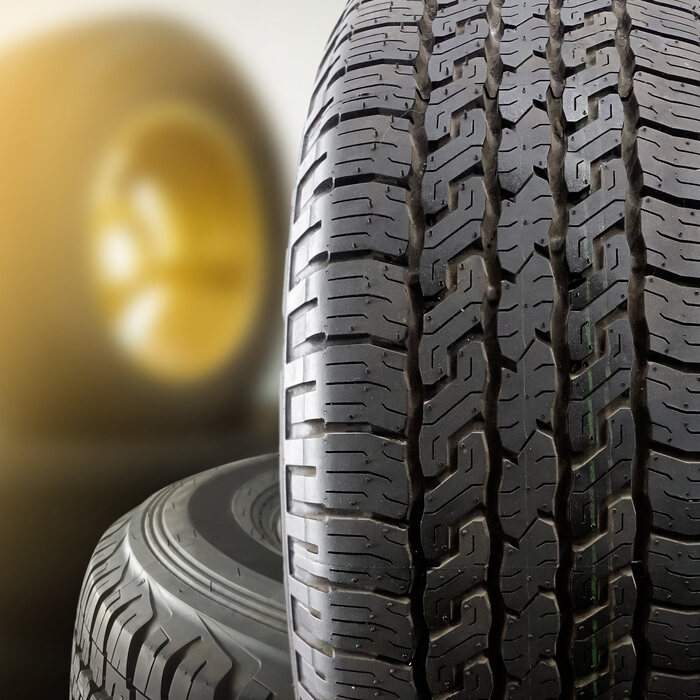SHOULD YOU REPLACE CRACKED CAR TYRES?
Not only should you routinely check your vehicle’s tyre tread depth and air pressure, but also the tyre surface and sidewall for other signs of wear or damage - and that includes cracks.
Cracked tyres should not be ignored, as they can lead to your vehicle failing its MOT, as well as having a higher risk of a blowout at high speed.
Good tyre care is just as important as checking your oil or headlights. Below is our guide to checking your tyres for cracks, and what to do if you find one (or more):
How to check for cracked tyres
It’s recommended that you undertake a thorough tyre check every two weeks to make sure they meet the minimum legal requirements.
Before checking for damage, you may want to wash the tyres with a tyre brush and warm soapy water. It’s easier to spot tyre damage when they’re clean.
The tread should be a minimum depth of 1.6mm, and the tyre pressure should be what’s in line with the information found in your vehicle handbook.
However, it’s also important to check the tyre sidewalls for signs of bulging and cracking.
Unlike for some punctures, a visual check of the tyres should be enough to spot any signs of severe damage. Natural sunlight will provide the best light for checking your tyres, or a torch if this isn’t possible.
Remember, you’re not just checking the surface of the tyre that makes contact with the road - the tyre wall should also be checked. This is where a bulge or crack is most likely to appear.
Why are your tyres cracking?
Tyres are designed to be used, and when they’re not they can deteriorate in different ways. When tyres haven’t been driven on for some time, it can cause flat spots, which is when the tyre loses its shape and has a noticeable flat side.
If you have significant flat spots on your tyres, when you drive your vehicle make sure you go slowly. When the tyres have warmed up they may return to their original shape. If not, you will have to arrange for new tyres to be fitted.
Flat spots can lead to cracks in the tyre sidewall, and cracks can potentially lead to a blowout.
Seasonal tyres
Environmental damage can also play a part in causing cracks in the tyre sidewall. Due to the hard rubber compound of summer tyres, when average temperatures drop to below seven degrees celsius the rubber can seize up. This can also lead to cracks, so road safety isn’t the only reason to stay on top of changing your summer or winter tyres at the right time of year.
Heat, UV rays and moisture
As with most things, tyres expand and contract when exposed to heat and cold, which over time can weaken the tyre and cause cracks.
Similarly, UV rays from exposure to direct sunlight is a common cause of cracks in tyres. Where possible, try to park your car inside, or in the shade.
Water can also lead to cracks in the tyre if it gets inside the tyre’s surface. Rubber is waterproof, but small cuts can allow water to get through. This can cause wear, and during cold conditions the water will turn to ice, which can expand and damage the rubber.
The tyre compound can harden and crack over a long period of time, so if you’re removing seasonal tyres ensure they’re properly stored to help prevent this.
Tyre pressure
The air pressure within your tyres can also play a big part in causing cracks. If tyres are underinflated they generate more heat, whereas an overinflated tyre can lead to bulging on the sidewall which risks a blow out.
The correct pressure - which can be different for both front and rear tyres - will be found in your vehicle handbook.
You should check your tyre pressure regularly using a pressure gauge, at your nearest petrol station, or for free at your local Just Tyres fitting centre.
Are cracked tyres illegal or dangerous?
Yes, cracked tyres are dangerous. Damage to the tyre wall, such as a crack or bulge, will greatly increase the risk of a blowout - especially when driving at high speed.
Tyres that don’t meet the legal limit for tread depth, along with tyres with cracks, cuts, or bulges in the sidewall will cause your vehicle to fail an MOT.
If you notice any problems with your tyres, it’s important to have them looked at by a tyre specialist as soon as possible.
When are cracks in tyre treads unsafe?
A tyre cracking along the sidewall is relatively common. However, while cracks in the tyre tread can occur, they are much less common. If you have a tyre with cracks in the treads, you should have it checked as soon as possible.
Cracks in the treads can indicate rot within the tyre, or an issue with the structure. Either can lead to severe damage to the tyre, so it should be looked at immediately.
How to fix cracked tyres
It’s recommended that you don’t try to fix cracked tyres. Unlike punctures, cracks affect the overall structure of the tyre, which can permanently weaken them and lead to a blowout.
Should you replace your cracked tyres?
Yes, cracked tyres should be replaced as soon as possible. It’s a sign that there’s something wrong with the tyre, due to either degradation over time, air pressure, or various environmental factors.
While not a legal requirement, it’s recommended that you carry a spare tyre (and the tools to change it) in the vehicle. Not only will this help in the event of a flat tyre, but also if you discover a crack in the sidewall or treads, and decide it’s prudent to make a swap.
If you find yourself asking should I replace cracked tyres? the answer is yes, immediately. Cracked tyres are evidence of an issue with the structure of the tyre, and can lead to a blowout = something you will obviously want to avoid.
Get a quick quote
Tyre care is important, so if your tyres have a bulge or crack and need to be replaced quickly, enter your vehicle registration number into our simple tool to buy tyres online.






 Same Day Fitting. Order By 10:30am
Same Day Fitting. Order By 10:30am
 39 Nationwide Fitting Centres
39 Nationwide Fitting Centres
 5 Year Warranty On All Tyres
5 Year Warranty On All Tyres
 Price Check Promise. Always Great Deals
Price Check Promise. Always Great Deals

 Find a Centre
Find a Centre


